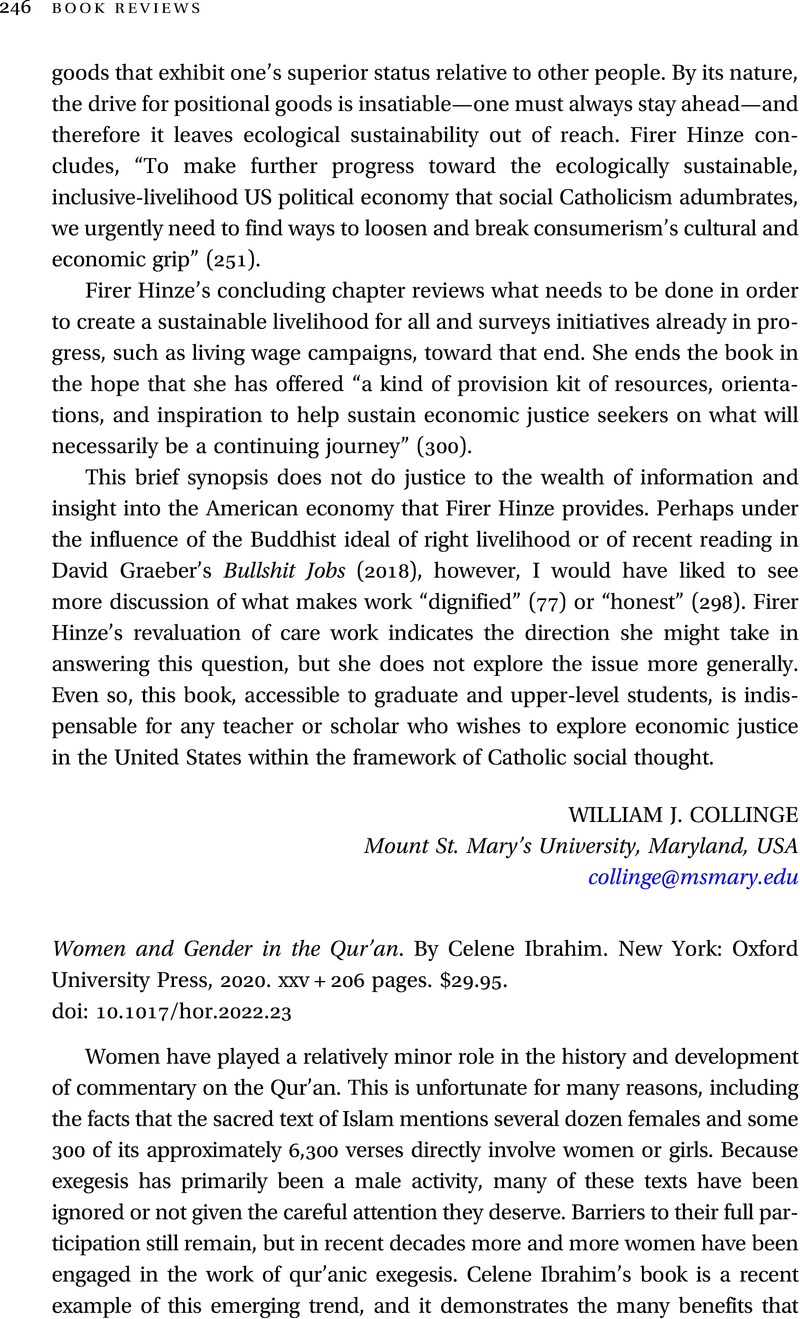No CrossRef data available.
Women and Gender in the Qur'an. By Celene Ibrahim. New York: Oxford University Press, 2020. xxv + 206 pages. $29.95.
Review products
Women and Gender in the Qur'an. By Celene Ibrahim. New York: Oxford University Press, 2020. xxv + 206 pages. $29.95.
Published online by Cambridge University Press: 28 June 2022
Abstract
An abstract is not available for this content so a preview has been provided. Please use the Get access link above for information on how to access this content.

- Type
- Book Review
- Information
- Copyright
- Copyright © College Theology Society 2022



